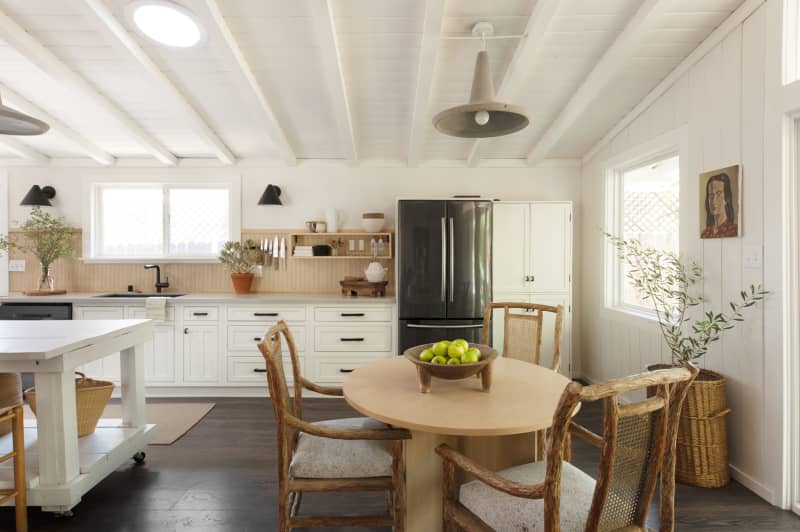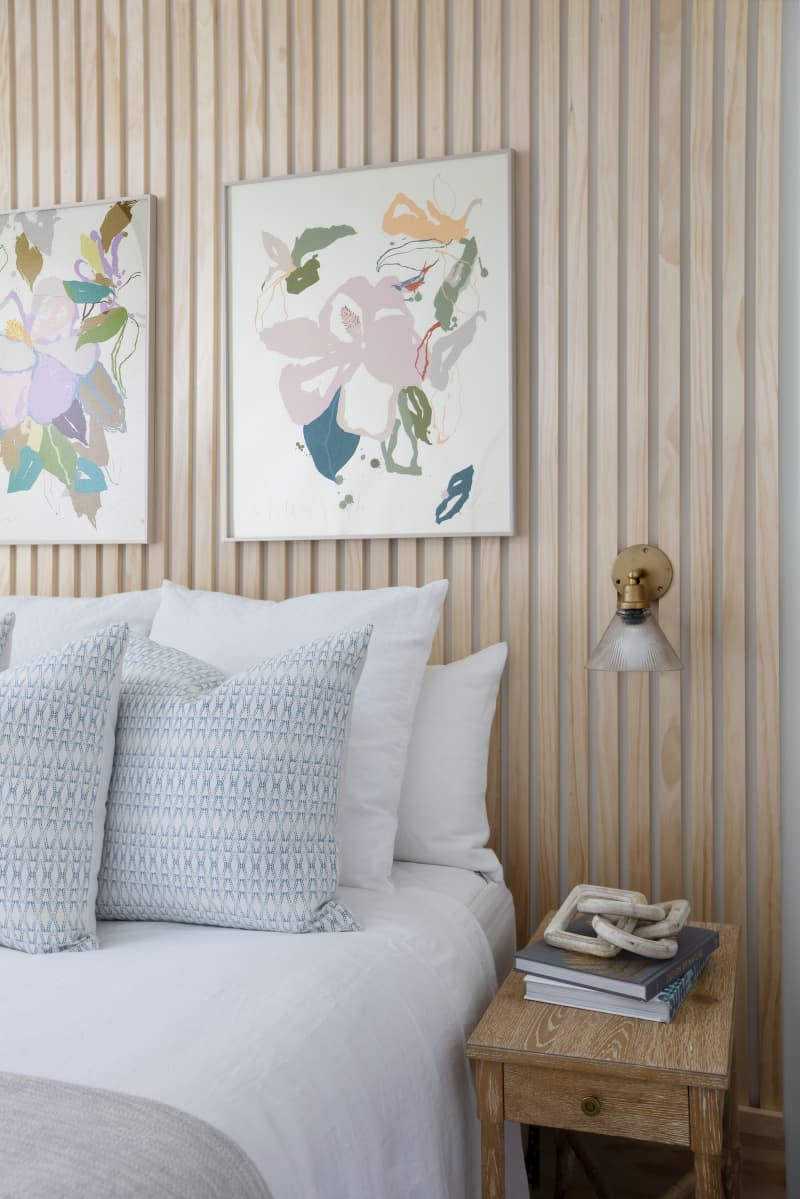4 Golden Rules for DIYing the Trendiest Accent Wall of Your Dreams

As with beauty and fashion, trends in interior design are often cyclical. (For proof, look no further than the Y2K-style decor that’s been popping up on social media.) Sometimes the trends come back just as they were in their first iteration, but often there’s a little twist to round two. Take, for example, fluted wood walls, which are the 2020s answer to 1960s and 1970s wood paneling.
Fluted wood walls have been enjoying their time in the spotlight for the past couple of years, along with fluted wood details on everything from cabinets to furniture to picture frames. “Fluted walls have become extremely popular as a way to add texture and dimension, but like any design element, it can easily be a hit or miss,” says Patrick Maziarski, principal at Beau Geste Interior Design.
“Done well, this can become an architectural feature in your home. But done poorly, and a fluted wall can look like a half-hearted attempt at enhancing a space. Any feature wall, whether fluting, wallpaper, or paint, needs to be cohesive with the overall design.”
So what makes a fluted wall a win and not a total fail? Read on to learn what no one tells you about fluted walls, according to a pro who’s been there.
Take surrounding architecture into account first.
Whenever Maziarski incorporates fluting into his work, he makes sure the design does one important thing: It works with the rest of the room. Just as an Art Deco-inspired furnishing would look out of place in a more bohemian room, or a maximalist light fixture might overwhelm a more minimalist space, a fluted wall looks best when it’s part of a space that makes sense.
“If fluted walls are executed alongside the correct architecture, it can actually be a callback to classic mid-century design,” Maziarski says.
Fluted walls tend to blend in better with mid-century designs, as well as more modern spaces that need a hint of movement (think: hard angles, lots of rectangles, and anything that reminds you of geometry class upon closer inspection). Fluted walls make a little less sense in ornate spaces that lean more traditional (like Colonial-style homes).
Get the proportions right.
Once you’ve committed to doing a fluted detail in your home, the next important step is to pay attention to scale. In other words, if you’re set on DIYing a fluted accent wall, Maziarski says it’s best to commit.
“If you’re going to do a fluted wall or ceiling, more is more,” he says. Use the detail on the entire wall, rather than just a piece of it, to make the design look more cohesive with the rest of your space.
On the other hand, Maziarski suggests using restraint when it comes to using fluting on a smaller canvas. “If you’re going to add a fluted element to a furniture piece, however, less is more,” he says. “Focus on just the kitchen island or the bathroom vanity, and leave it at that.”

Buy quality wood at the right size.
In order to get quality results, you shouldn’t cut corners in the shopping aisle or during the job. “Be careful with the materials and colors you select for a fluted wall,” Maziarski says. “Done cheaply, it can look, well, cheap. Many companies offer prefabricated panels for this very application, so just ensure their materials are high-quality.”
You’ll also want to make a decision about the type of fluting for your project, and make that choice universal — don’t mix-and-match materials! “Rounded fluting in the frame of a cabinet door, as one example, is much more appropriate in traditional applications,” he adds. “A chunkier reed in an interesting shape or pattern is more contemporary.”
Pay attention to the wall’s existing details.
Given that the most successful fluted walls are straight as can be, another aspect of this application that you’ll want to figure out beforehand is how to apply your materials to a wall that might not be entirely plumb (as most walls are). “You want this to look clean and sharp,” Maziarski says. “Straight lines require precise installation.” Consider renting or investing in a laser level to ensure exact spacing, and you might have to apply wood shims to get every line just so.
And one last tip? Decide how you want the fluting to interact with details like baseboards, crown molding, and the like. In most cases, it’s best to make the fluting the star. “Taking all of your finishing elements into account will make sure your fluting looks well-executed.” Maziarski says. As is true with almost all design work, the more you plan for, the better.

